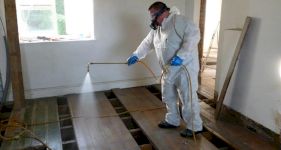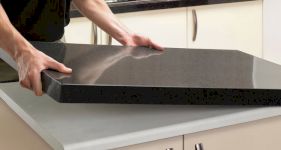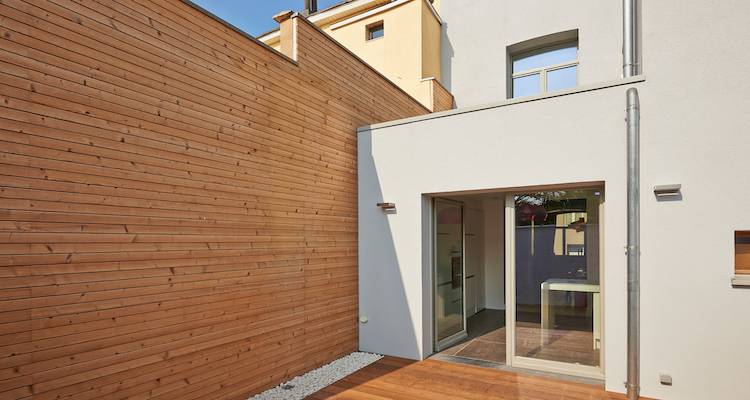How to Build a Kitchen Island
Building a kitchen island can transform your kitchen, and will also save you money by doing it yourself. Check out this step-by-step guide which will show you exactly what you tools and materials you need, and what you need to do.
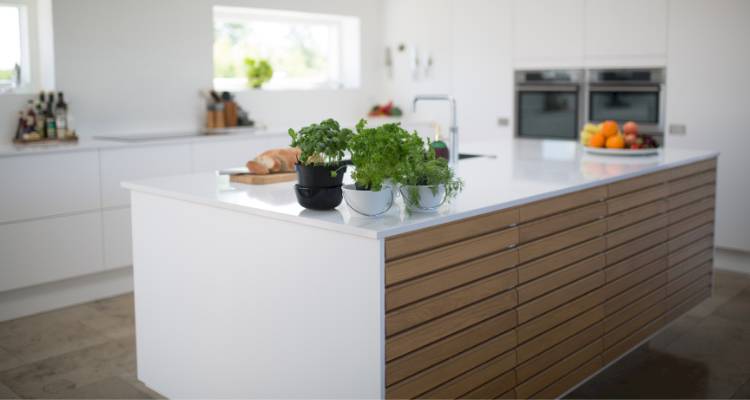
Table of Contents
- What Tools Do I Need to Build a Kitchen Island?
- What Safety Equipment Do I Need to Install a Kitchen Island?
- What Materials Do I Need to Build a Kitchen Island?
- How to Prepare for a Kitchen Island Installation
- How to Build a Kitchen Island Yourself
- Kitchen Island Types
- Kitchen Island Maintenance
- How to Remove a Kitchen Island
- FAQs
- Sources
What Tools Do I Need to Build a Kitchen Island?
Below is a list of the tools that you will need to install your new kitchen island:
- Spirit level
- G-clamp
- Drill and drill bits
- Screwdriver
- Duct tape
- Tape measure
- Pencil
What Safety Equipment Do I Need to Install a Kitchen Island?
Below is a list of the recommended safety equipment when building a kitchen island:
- Protective goggles or glasses
- Gloves
What Materials Do I Need to Build a Kitchen Island?
Below is a list of all of the materials that you will need to build a kitchen island in your home:
- Kitchen base unit x2
- Base unit side panel x 2
- Breakfast bar back panel
- Pre-cut solid wood worktop
- L-brackets
- Plinth
- Screws
- Cabinet doors and handles
- Support brackets
How to Prepare for a Kitchen Island Installation
To prepare for building your kitchen island, you will need to work out your new kitchen island's measurements and placement before you can begin.
You must ensure that it fits in the room and that you have enough space to move around it. You should aim to have at least 1.2meters between the kitchen island and the existing kitchen counters or walls.
How to Build a Kitchen Island Yourself
Below is a step-by-step guide on how to install a kitchen island using two modern kitchen cabinets side by side:
Step 1
Start by assembling your cabinets. Always follow the manufacturer's instructions to ensure that these are assembled correctly.
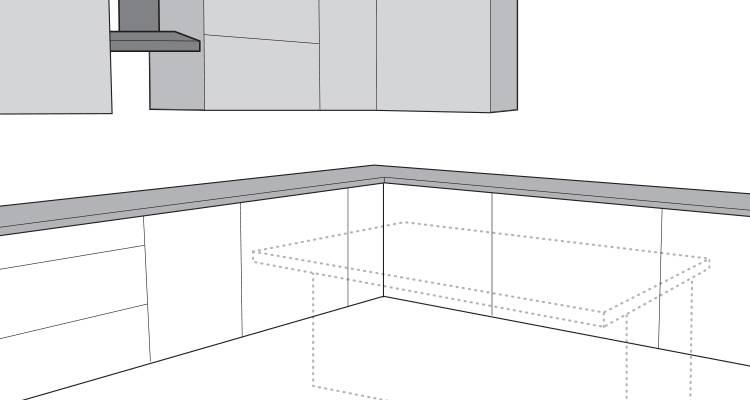
Step 2
Once assembled, place your two cabinets side by side in the position where you would like your island to be.
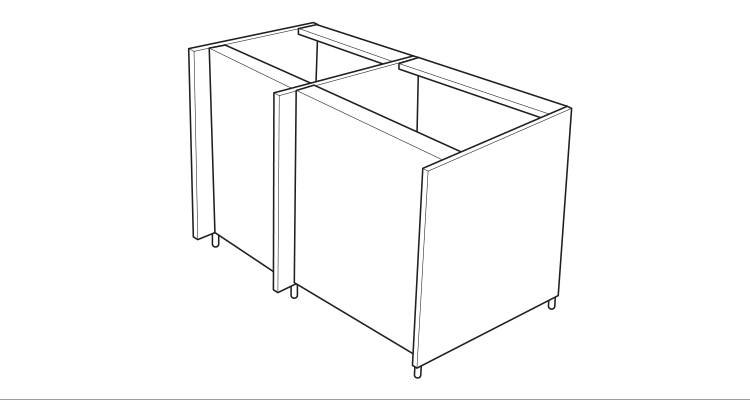
Step 3
Check that the cabinets are completely level using a spirit level and adjust them by raising or lowering the feet as needed.
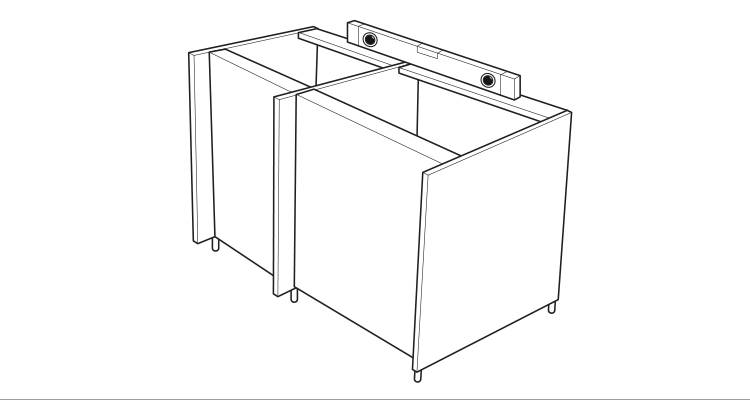
Step 4
Check that the cabinets are completely level using a spirit level and adjust them by raising or lowering the feet as needed. Then, clamp the two cabinets together using a G-clamp.
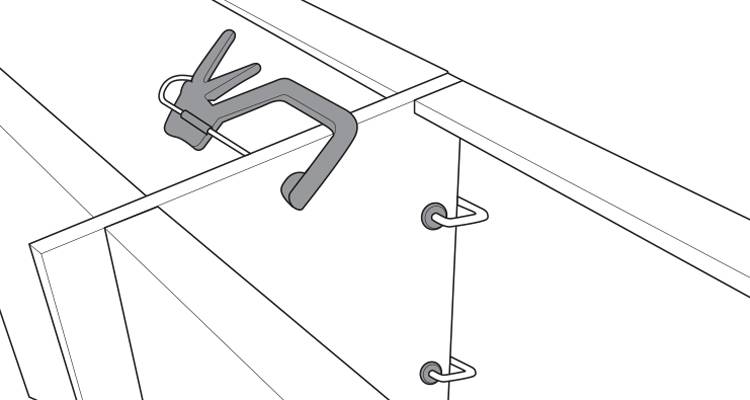
Step 5
To connect the two cabinets together neatly, you can hide the connecting screws behind the hinge plates. Begin by removing the hinge plates and drill a hole underneath.
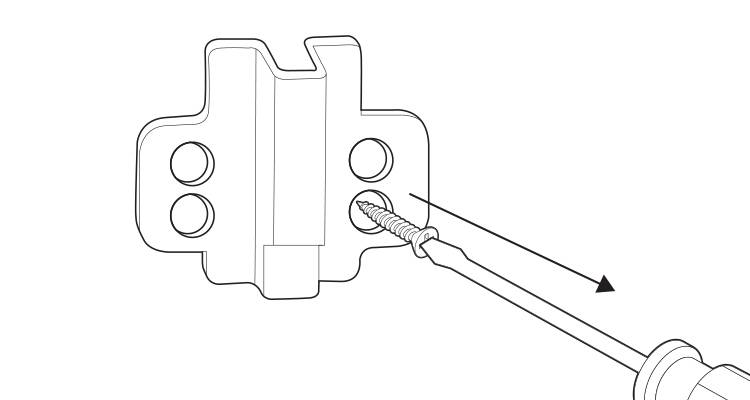
Step 6
Then, screw through this hole to the adjacent cabinet and replace the hinge plate.
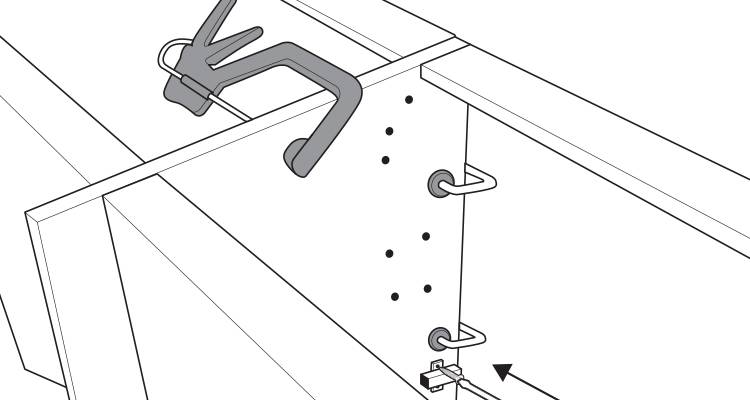
Step 7
At the back of the cabinets, attach them together by driving screws through pre-drilled holes.
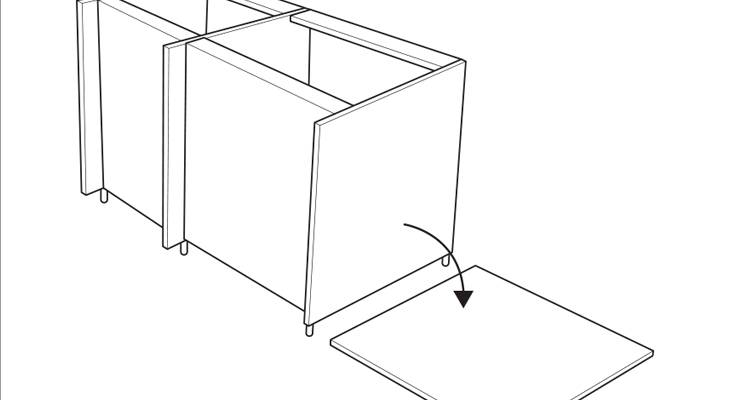
Step 8
You now need to construct the outer shell of your island. Begin by working out where you will attach your end panels to the floor by laying them out next to the cabinets. Make sure the legs of the cabinet won't obstruct the L-shaped brackets.
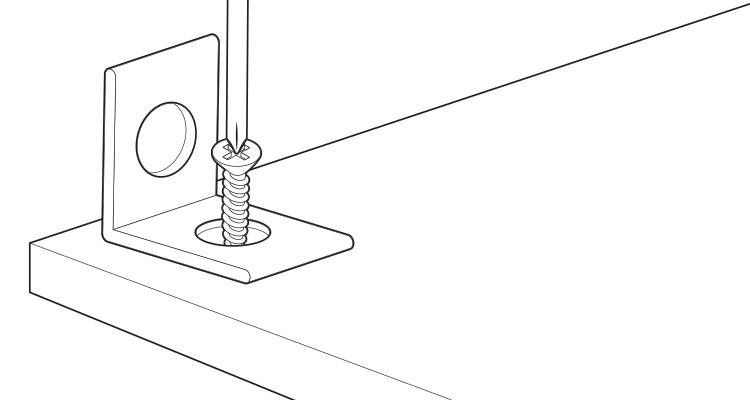
Step 9
Then, screw the L-shaped brackets into place on the end panel where the panel will meet the floor. Put two of the brackets on each end panel for the best support.
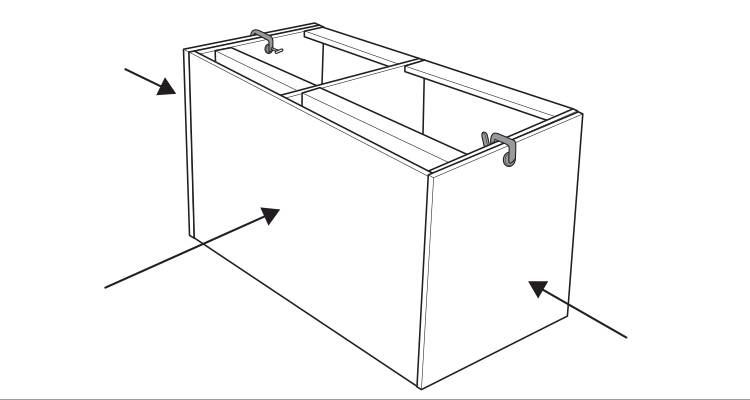
Step 10
Then, clamp the side panels to the cabinets and position the back panel between them. Carefully adjust their positions until you are satisfied that they are in the correct place. Place some duct tape along the edges to hold them in place.
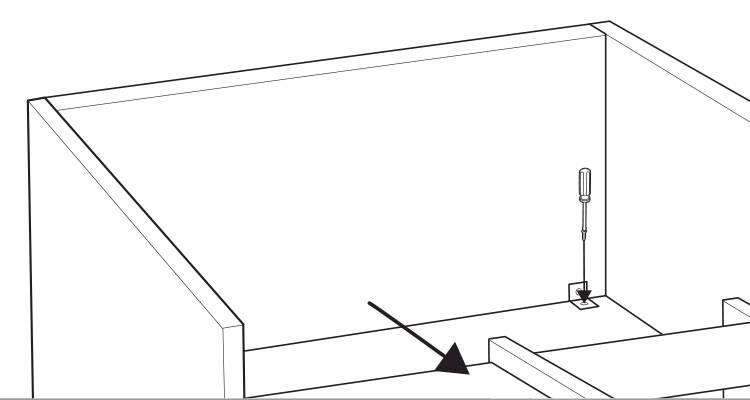
Step 11
You should then carefully slide the cabinets out from the side and back panels and attach the side and back panels to the floor using L-shaped brackets. Also, use brackets to attach the side panels to the back panel.
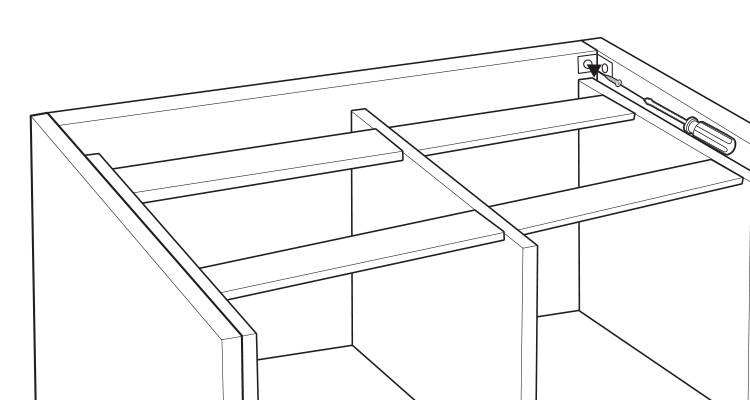
Step 12
You can then slide the island cabinets back in place between the side and back panels and attach the cabinets to the back panel using more L-shaped brackets.
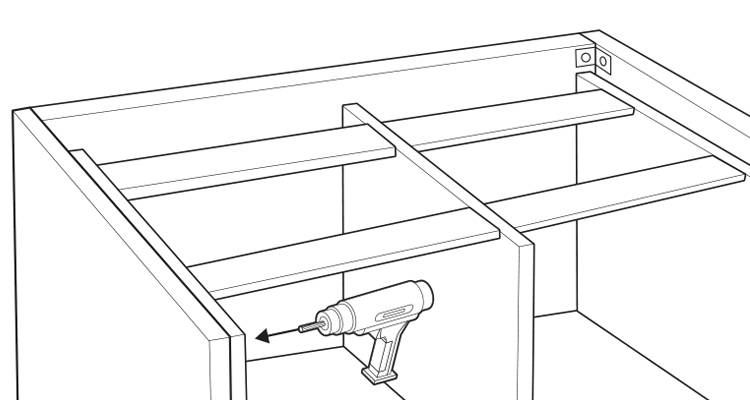
Step 13
To attach the cabinet's side panels, drill through the cabinet from the inside using pre-marked holes. You can then screw the cabinet to the side panels.
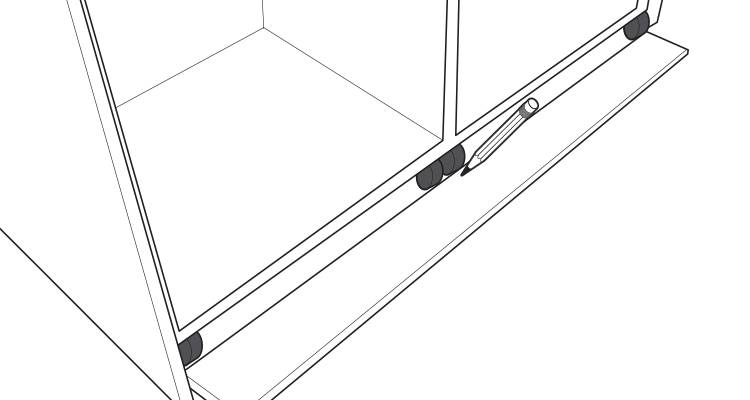
Step 14
To fit the plinth to the bottom of the cabinets, you should first place it at the front of the feet and put markings on it where the feet's centre is.
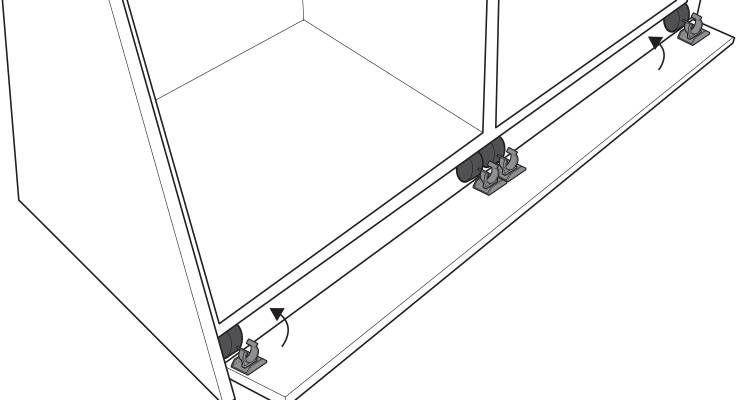
Step 15
Then screw the brackets centrally to the mark and roughly halfway up the plinth. Then slide in the clip and clip the plinth onto the legs.
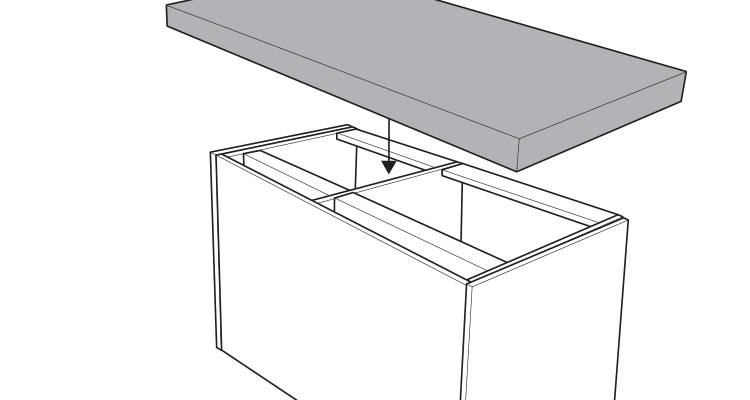
Step 16
Now place the work surface on top of the cabinets and work out exactly how you want it to sit. If you want a kitchen island with seating, ensure sufficient overhang on one side for sitting at.
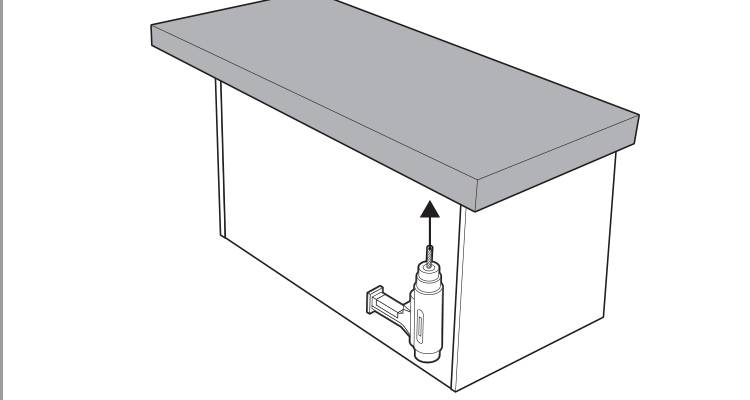
Step 17
Using L-shaped brackets, drill and attach the work surface to the cabinets.
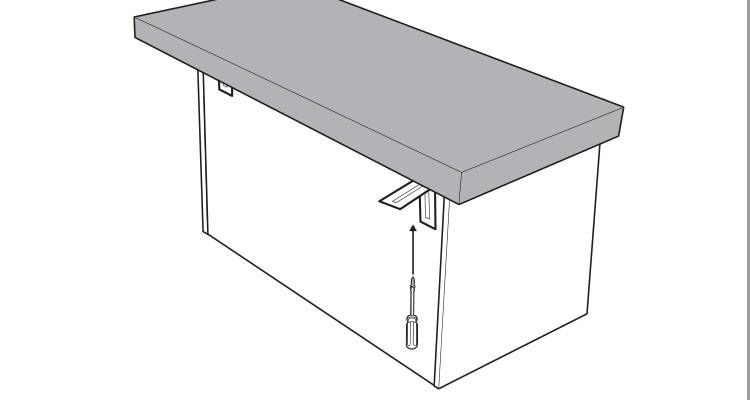
Step 18
Install support brackets on the overhang for extra support if necessary.
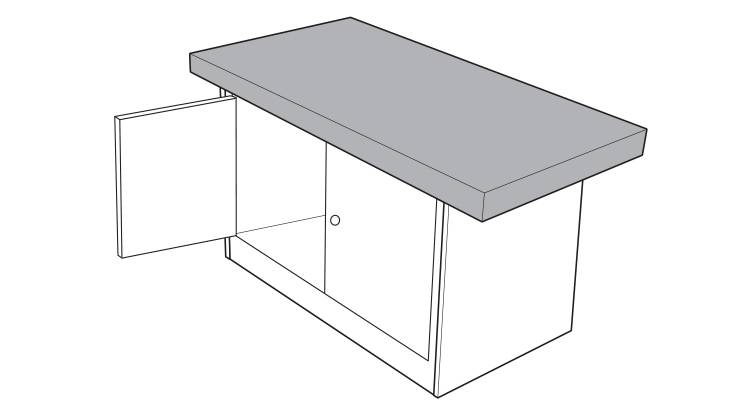
Now, install the doors to the cabinet according to the manufacturer's instructions. This completes your kitchen island installation.
Kitchen Island Types
There are several different kitchen island types. The type of kitchen island you need will depend on a number of factors, including your personal preferences and the size of your kitchen.
If you're looking for kitchen island inspiration, check out our kitchen ideas guide.
Below is a list of the most popular types of kitchen islands:
Cabinet Kitchen Island
A cabinet kitchen island is one that is made up using kitchen cabinets and formed into an island in the centre of the kitchen. This is the most popular type of kitchen island and is the one that we have explained how to install within this article.
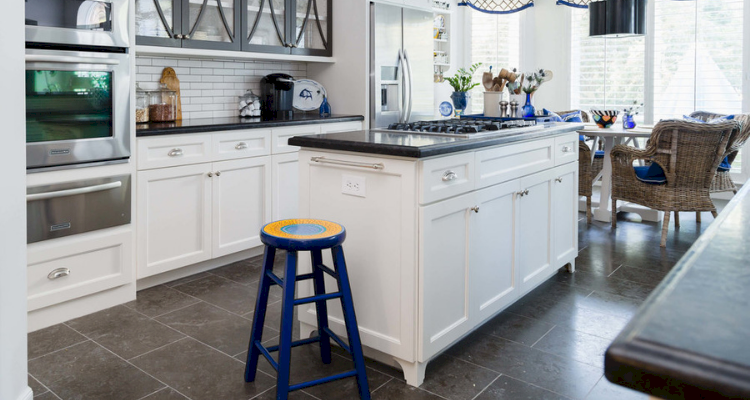
PROS
✔ Popular design
✔ Offers plenty of additional workspaces
✔ Can have a seating area
✔ Easy to install
CONS
✖ Doesn't feature water supply or electrical supply
Rolling cart Island
A rolling cart kitchen island is like a portable preparation area that can be moved to the side if needed and doesn't have to be a permanent central feature.
PROS
✔ Cheap to buy
✔ Can be moved around
✔ Easy to install
CONS
✖ Tend to roll out of place
✖ Aren't a permanent feature
✖ Doesn't feature water supply or electrical supply
Kitchen Island Table
A kitchen island table is basically a table placed where the kitchen island would go. It's a place that can be used for preparing food and for eating meals on.
PROS
✔ Easy to install
✔ Easy to remove
✔ Can be used as both an island and a table
CONS
✖ It's basically just a table
✖ Doesn't feature water supply or electrical supply
Double Tired Kitchen Island
If you're looking for a kitchen island that acts as both a cooking preparation island and an eating island, then this is the best option for you. It combines a lower island for food preparation with a higher island for eating.
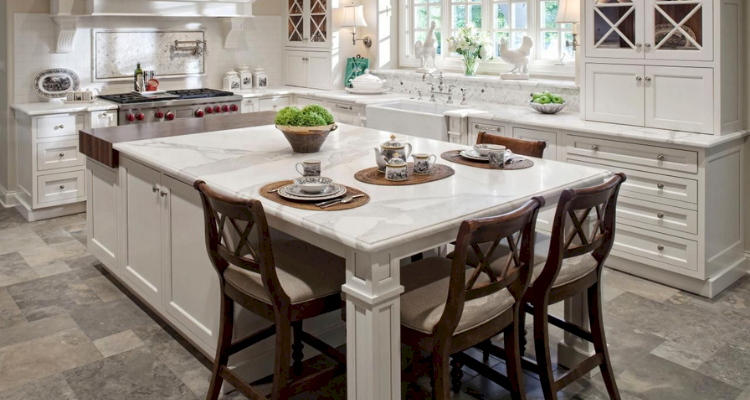
PROS
✔ This island offers the best ergonomics for both options
✔ Allows for multiple uses
CONS
✖ The eating space reduces the size of the cooking/prep space
✖ Difficult to install
✖ Doesn't feature water supply or electrical supply
Fully Functional Kitchen Island
This type of kitchen island does everything that a typical kitchen counter does. However, it also has electrics, a sink, drainage, and plenty of counter space.
PROS
✔ Offers everything your need for food prep
✔ Plenty of counter space
CONS
✖ Expensive
✖ Difficult to install
Kitchen Island Maintenance
There are several ways to maintain your kitchen island and keep it looking and performing at its best. Below is a list of things you can do to maintain your kitchen island:
Oil Wooden Counter Tops
If your kitchen island has wooden countertops, you should regularly rub oil into the surface. This acts as the first line of defence against wear and tear. This should be completed roughly every year or two to keep the wood at its best.
Wipe Spillages Quickly
Spillages on the surface of your kitchen island can result in stains or ruin the countertop's material. With this in mind, it's important to always wipe up any spillages as soon as possible.
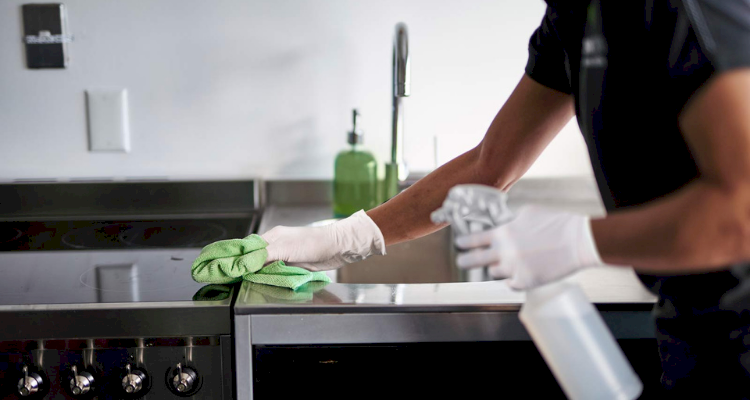
Use Trivets and Pot Holders
It's best to avoid placing hot items directly onto the surface of your kitchen island. Hot items could affect the surface or stain it so you should use trivets and pot holders to avoid placing hot items right on the counter.
Use Cutting Boards
You should never cut food directly on your kitchen island surface as this could scratch or otherwise damage it. Always use an appropriate cutting board to protect your kitchen island surface.
Clean The Island Regularly
To keep your kitchen island in the best condition possible, you should aim to clean it regularly. A deep clean every one to two weeks should be enough to keep it in tip-top shape. Plus, you should also wipe over it daily after use.
How to Remove a Kitchen Island
Below is a list of steps that you'll need to take to remove a kitchen island:
- Remove any drawers or loose shelves from your kitchen island
- Next, remove the countertop part of the kitchen island by removing any screws that hold it in place and lifting it away from the rest of the island
- Remove any fasteners that hold your kitchen island to the floor
- Once your kitchen island has been loosened, you can then start taking it apart bit by bit
- Once your kitchen island is in pieces, you can then remove and dispose of it or put it back together in a new area as desired
FAQs
How do you build a kitchen island with a breakfast bar?
How big should a kitchen island be?
What can I use my kitchen island for?
- Cleaning up
- Food preparation space
- Cooking
- Informal dining
How much space do I need between the island and counters?
How long does it take to build a DIY kitchen island?
Sources
https://www.youtube.com/watch?v=KCS0BXHZNuw
https://www.dwell.com/article/6-quick-tips-for-maintaining-wood-countertops-583571dc
https://www.thisoldhouse.com/kitchens/21015008/tips-for-building-a-better-kitchen-island
https://kitchinsider.com/kitchen-island-size


